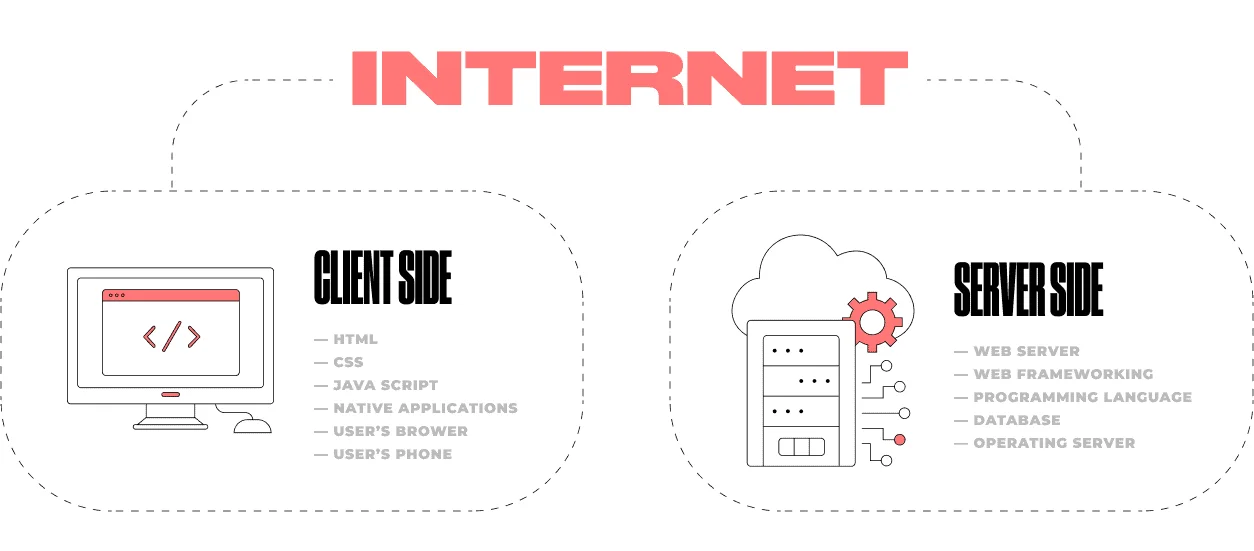
First thing first, let’s define what a tech stack is.
A tech stack refers to a set of programming languages, frameworks, and libraries. Together, they help you create a website, a mobile app, software, or something that needs to be scaled up to serve millions of users. There are many technologies. Here are just some of the most popular: Python, Ruby, React, JS, Swift, WordPress, PHP, AngularJS, Flutter, Apache, C++, MongoDB, Node.js, and more. The tech stack is when I stack all these on top of one another to have an operating system, web frameworks, databases, and backend servers.

When embarking on a new software development project, one of the most critical decisions that teams face is defining the appropriate “tech stack”. This set of technologies forms the foundation upon which the application will be built, and choosing the right tools can make the difference between project success and failure.
In an increasingly diverse and dynamic technological market, where new technologies and trends constantly emerge, selecting the right set of tools can be a challenging task. Teams often encounter a wide range of options, from programming languages to frameworks, databases, and cloud infrastructure platforms. This diversity can lead to difficult decisions, as each technology has strengths, weaknesses, and ideal use cases.
Choosing the right tech stack requires a strategic and well-informed approach. Teams must consider various factors, such as the project’s functional and non-functional requirements, available budget, team experience, expected development time, and future scalability. It is also crucial to evaluate the stability and long-term support of the selected technologies and their ability to integrate with other existing systems and tools.
In this article, I will explain the fundamental “do’s and don’ts” to help you make informed decisions when defining your tech stack, thus ensuring a solid foundation for your future professional endeavors. We will examine best practices for evaluating and selecting technologies and common mistakes to avoid during this process. Ultimately, this article aims to provide you with the tools and knowledge necessary to build a tech stack that not only meets the needs of current projects but also lays the groundwork for their future growth and evolution.
Without further ado, let’s get started with the list!
What you should do
1. Investigate thoroughly: Research the technologies available in the market that best suit the needs of your project. Consider factors such as scalability, performance, developer community, and technical support.
2. Start with the basics: Begin with well-established and widely used technologies in the industry. This may include popular programming languages, frameworks, and databases. Learn all the basics; you will never know all the features a programming language has; before you start coding, find out as much as you can about it.
3. Consider scalability: Consider the scalability of the technologies you choose. In a world where everything is moving towards cloud developments, ensure that the technologies you intend to work with can support your application without compromising performance or stability. There are two kinds of scalability: Horizontal scalability is an app’s ability to handle more requests. Think of it as a railway system: you add locomotives to increase your capacity to transport more goods.
-
Vertical scalability means adding new resources to an app to increase its capacity without damaging the overall performance.
-
Evaluate compatibility: Assess the compatibility among the different technologies in your stack. Ensure they can integrate seamlessly and work together efficiently.
4. Seek feedback from experts: Seek the opinion of experts in the field. They can provide valuable insights into the most suitable technologies for your project and how to implement them effectively. Today, many Streamer Programmers show how they program and find solutions to everyday problems in real-time.
What you should NEVER do
1. Don’t chase trends mindlessly: Do not mindlessly follow trends without considering if they are suitable for the specific needs of your project. What is popular now may not be the best for your application.
2. Don’t overcomplicate: Do not overcomplicate the selection of technologies. Opt for a stack that is robust enough to meet your project’s requirements but not unnecessarily complex.
3. Don’t ignore community support: Do not disregard community support when choosing technologies. An active and engaged community can provide resources, problem-solving solutions, and regular updates essential for your project’s long-term success. Remember to check all the repositories and documentation that exists on the technology you will choose; all the documentation you can find is never enough!
4. Don’t overlook documentation: Good documentation is key to understanding how to use a technology and resolve issues as they arise effectively.
5. Don’t forget about maintenance: When selecting technologies, do not forget about long-term maintenance. Ensure that the chosen technologies are compatible with future updates and can be easily maintained over time. But how do you understand that your chosen technology is being updated the way it should be? If a framework is updated too often, it’s most likely in the active development stage. So, it will be reasonable to pick something less volatile. At the same time, you don’t want to choose something that has not been updated for more than 3 months. An actively developed technology is constantly updated with new patches and hotfixes.
In conclusion, defining your tech stack is a pivotal decision that can profoundly impact your project’s success. By adhering to the do’s and avoiding don’ts discussed previously, you can craft a robust, scalable, and efficient technology infrastructure tailored to your unique needs. Remember, flexibility, scalability, and compatibility should be at the forefront of your considerations. Embrace innovation, stay informed about emerging technologies, and be ready to adapt as your project evolves.
Join 2000+ Founders and Developers crushing their businesses and careers with monthly advice. You can also follow us on LinkedIn , Twitter & Instagram!


